Wondering how to add or remove Home button on toolbar in Microsoft Edge Chromium?
As part of the redesign, Microsoft has made Edge look sleeker and more minimalist in terms of its overall design. The downside however for some users is that its standard toolbar no longer comes with a home button.
Now when you install the new Chrome Edge, the Home button will not appear by default, but this is just because a certain feature is disabled. Having said that, all you need to do is manually reconfigure the settings in Microsoft Edge in order to display the Home button.
In this guide, we will walk you through several easy methods of doing so in detail. All the methods are easy to execute and should not take much of your time.
Let’s get started!
1. Modify Browser Settings.
The simplest method for executing the task under consideration is through Microsoft Edge Settings. Edge Settings contains a dedicated section where you can modify the appearance of your browser.
- Launch Microsoft Edge and click on the More button (three button) on the top-right corner of the window.
- Select Settings from the context menu.
- In the next window, select Appearance from the left pane and turn the toggle on/off against Home button in the right pane as shown below.

In case you select to enable the Home button, you can also select the New tab page or URL option. This will open a new tab whenever the Home button is hit.
2. Modify Windows Registry.
Registries are databases used by Windows to store information about the processes and applications of an operating system. During relevant operations, Windows relies on the Registry Editor to keep track of important information. This makes the Registry Editor an important component of our operating system.
In this method, we will modify Windows Registry to make the desired changes. Make sure, however, that you are logged into Windows as an administrator before proceeding with the method mentioned below.
- Press Windows + R keys simultaneously on your keyboard to open a Run dialogue box.
- Inside the text field of the dialogue box, type ‘regedit’ and hit Enter. This will launch Windows Registry on your PC.
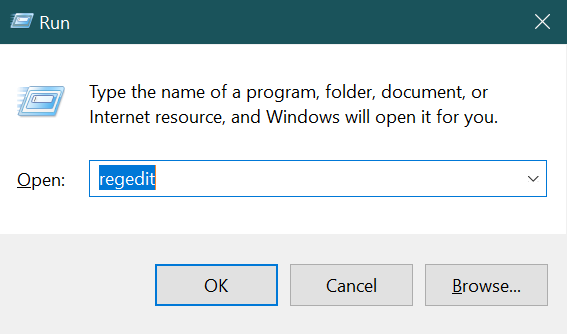
- Once you are inside the Registry Editor, navigate to the location mentioned below.
HKEY_LOCAL_MACHINE\SOFTWARE\Policies\Microsoft\Edge
- If you cannot locate the Edge key, then right-click on the Microsoft key and select the New > Key option.
- Rename this key as Edge and double-click on it.
- Now right-click anywhere in the right pane and select the New > DWORD (32-bit) Value option.
- Rename this newly created value as ShowHomeButton.
- Double-click on ShowHomeButton and under Value data, type 1 to enable the feature. To disable it, type 0 under Value data.
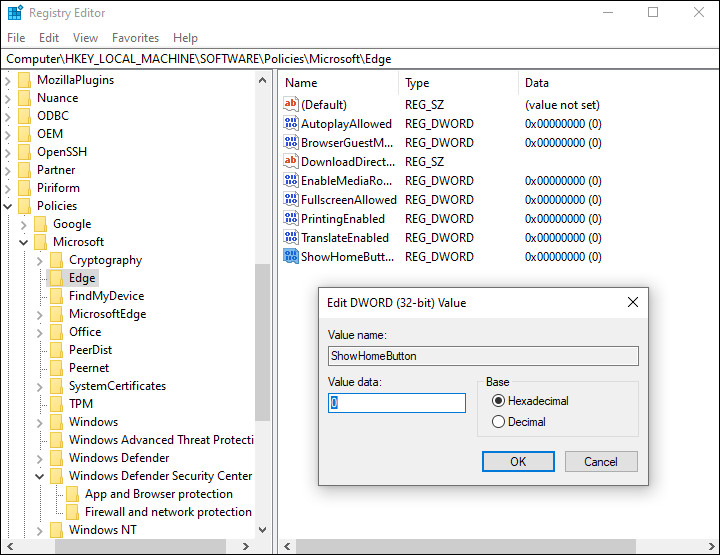
Once done, restart your PC to save the changes.
3. Try Using CleanMyPC.
If you are unable to perform any of the methods described in this guide, your system may be infected. Prior to troubleshooting, it would be best if you clear the junk files.
Using a professional PC cleaner can help you remove computer clutter and our favorite cleaner for this purpose is CleanMyPC.

In addition to removing junk files, CleanMyPC has a range of tools that can address other PC problems. After you install the tool and run an initial scan, the tool will automatically find and fix problems without your input.
CleanMyPC is also quite easy to use. Even if you’ve never used a PC cleaner before, you’ll have no problem using it.
4. Use Group Policy Editor.
If you find using Windows Registry complicated, then try using the Group Policy Editor to make the desired changes.
The Group Policy Editor (GPE) is a tool provided to help administrators customize the behavior of their operating systems. The information in GPE is stored in policies, and you can modify the relevant policies to make the changes you desire.
Here is how you can use the Group Policy Editor to add/remove the Home button:
- Visit Microsoft’s official website.
- Scroll down the window and select the version details of your Microsoft Edge.
- Click the GET POLICY FILES button to download the policy files.
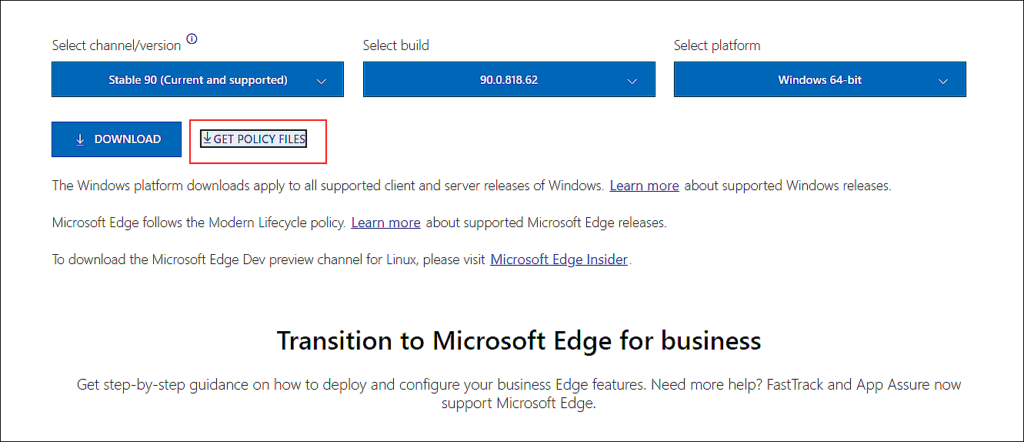
- Once the download is complete, extract the downloaded file and then open the folder.
- In the folder, navigate to the location mentioned below.
MicrosoftEdgePolicyTemplates\windows\admx
- Copy the msedge.admx and msedge.adml files and paste them in the C:\Windows\PolicyDefinitions folder.
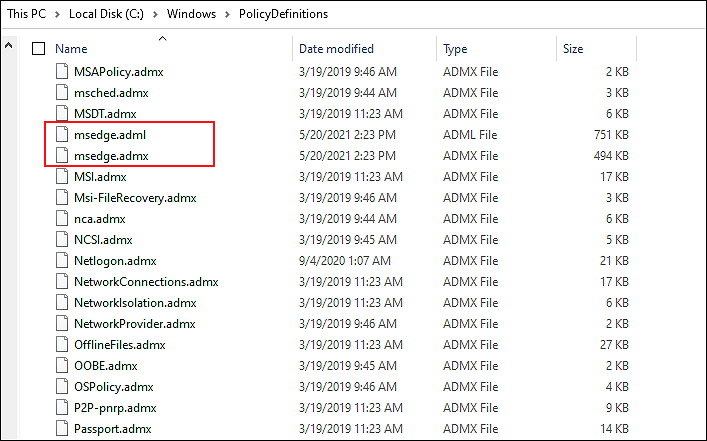
- Once you have pasted the files, restart your PC.
- Upon reboot, open a Run dialogue box by pressing Windows + R keys on your keyboard simultaneously.
- Inside the text field of the dialogue box, type ‘gpedit.msc‘ and hit Enter. Doing so will launch the Group Policy Editor on your PC.
- In the Group Policy Editor window, navigate to the location mentioned below.
Computer Configuration\Administrative Templates\Microsoft Edge\Startup, home page and new tab page\
- Now locate and double-click on the Show Home button on toolbar policy in the right pane.
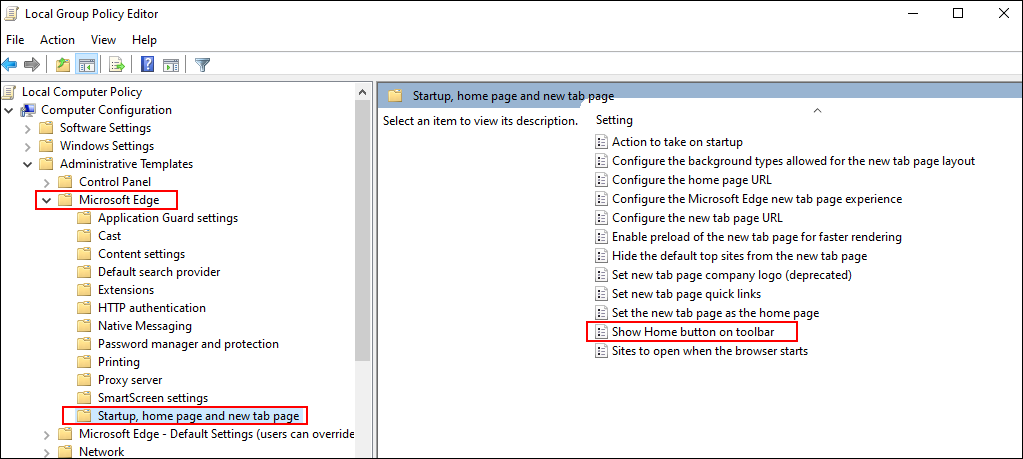
- Select Enabled/Disabled according to your preferences and click on Apply to save the changes.
As simple as that!
This brings us to the end of our guide on ways to add or remove the Home button on the toolbar in Microsoft Edge Chromium. We tried walking you through all the steps in detail and hope that one of the methods mentioned in this post did the trick for you. In case you still have any confusion about the steps, please let us know in the comment section below!
If this guide helped you, please share it. 🙂





